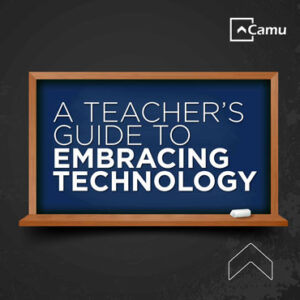
There is no denying that the constantly evolving digital technology has been positively impacting the education sector. A host of cutting-edge technologies and tools make it easier for educators to conduct and learners to attend classes online. More and more academic institutions have been leveraging online virtual classroom platforms in these Covid-19 pandemic times.
Virtual classes are as interesting as offline ones. Rather, most believe these to be more appealing, aside from being a cost and time saver. Moreover, the new kind of classrooms helps both teachers and students to teach and learn from the comfort of their homes. Staying home is the need of the hour to prevent the spread of the deadly virus. Hence, everyone is embracing virtual classroom technology.
Brief Definition of Virtual Classroom
Before shedding light on virtual classrooms’ definition, let’s learn about the virtual learning environment. It is a web or cloud-based platform, which provides the learning materials in a well-structured manner similar to the availability of the same content in a normal classroom setting. The virtual learning environment enables both tutors and students to connect online hassle-free in real-time.
Instructors employ online whiteboards, screen sharing and video-conferencing in order to conduct live lectures, hold virtual office hours and interact with learners. The online learning space can easily accommodate a considerable number of teachers and students and allow them to perform learning exercises seamlessly.
Learn More
Still searching? Click here to find out Benefits of virtual classrooms
Virtual Classroom Vs e-Learning
A virtual classroom platform is unlike e-learning software. Compared to e-learning, virtual classes are more interactive. Read on to find out the differences between virtual or online classrooms and e-learning.
As already explained above, tutors and learners engage, interact, and discuss with each other online in a virtual classroom. Aside from teacher-student communication, the learners can also chat among themselves in online classes.
On the other hand, e-learning or electronic learning is a sort of online training where both instructors and learners take part and carry out requisite classroom tasks. An e-learning tool enables them to perform their activities on their own schedule and at their desired pace.
Virtual Classroom Vs Distance Learning
All those students who cannot remain present in person in a brick-and-mortar school, college or university and attend offline classrooms every day opt for distance learning education. Earlier, learners had only one option to correspond with tutors, which is via mail. In this digital age, distance-learning takes place virtually. So, communication mediums have indeed increased. However, it’s not the same as a virtual classroom.
In a virtual learning space, teachers and instructors get the opportunity to conduct in-person interaction, which helps them ask questions and resolve queries in real-time. Distance learning education doesn’t offer any such interaction facility. Those who pursue distance courses have to rely on apps that support video calling, conferencing and messaging.
Online virtual classes stand out and are the most preferred option because these are deployed with multiple in-person online training procedures. It’s a supplemental teaching method. Distance learning is a solely used training method, and it has no use as a supporting medium of learning.
Virtual Classroom Types
A couple of noteworthy aspects of a virtual classroom are that it is easy to customize and equally hassle-free to scale. These classes that happen virtually could be the backbone of an entire program or act as an add-on in a particular course. An institution can use it according to its requirements. The below-mentioned ones are the common types of virtual classrooms.
Entirely Online
It is certainly a type that’s prevalent worldwide. However, it is not so popular because it restricts in-person offline interactions. Courses available in this particular type of digital learning class can be synchronous or asynchronous.
Enhanced Virtual Learning
Most programs are delivered online for this type. It makes use of very few offline elements. It enables learners to interact with instructors face-to-face and take part in collaborative and interactive sessions with peers and lecturers. Such a feature comes to the major help of students as they can significantly enrich their knowledge regarding the right way to complete vital assignments.
Rotational
This specific virtual classroom type consists of virtual and offline classes that institutions rotate as per their convenient schedule. The majority of colleges and universities prefer sticking to online learning because of its multiple benefits. However, they opt to conduct face-to-face interaction and discussion sessions to clarify doubts and help students enrich their knowledge.
Flexible
Learners get the chance to access valuable learning content anytime when the virtual classroom type is flexible. The classroom stays open round the clock so that no student encounters any difficulty obtaining materials they need for their assignments. It benefits learners a lot as they can easily access everything anytime that teachers taught them online before.
Combined
This particular method helps learners acquire profound knowledge. It combines virtual learning approaches and methods implemented by institutions. Students who opt for the combined type get the chance to select a learning method that’s ideal for them.
Learn More
Still searching? Click here to find out Features must-have in virtual classroom
Why Choose Virtual Learning over Physical Classrooms?
There are a lot of benefits of virtual classroom. Here, light is thrown on a few of those factors that truly make virtual learning stay ahead of the traditional learning method.
Top-Notch Flexibility
Undoubtedly, online learning guarantees utmost flexibility to both instructors and learners. One can participate and practice learning exercises from different locations at their convenient time. No matter where participants are, virtual classes enable them to seamlessly interact and engage with one another. The flexibility aspect helps improve the quality and efficacy of online learning.
Remarkable Exposure
Virtual or online teaching’s exposure is so wide that conventional learning systems can’t match up. Students from different parts of the world can take part in a certain course that takes place completely online. The traditional method doesn’t offer this facility. Long-distance teaching and learning are possible in this digital era because of digital classrooms’ unmatched and wide exposure.
Improved Learning Interaction
In an online class, both teachers and students make use of a host of communication mediums that include voice calls, video calls, chatting, messaging, virtual meeting and many more. One gets the chance to choose a mode they prefer to communicate or interact in a better manner. It helps improve the standard of virtual teaching and learning.
Real-Time Learning
Online classrooms stand out because tutors can teach and help students learn and gain knowledge in real-time. Classes that take place live virtually are more student-centric. The video sessions that are pre-recorded are more teacher-focused and institution-led.
Multiple Types of Learning Materials
It’s easier for instructors to help students assimilate a new topic in an online class. They can easily make use of different highly engaging content types such as slides, videos, animations, online whiteboards, etc., to make it easier for learners to visualize a concept.
Learn More
Still searching? Click here to find out How to make virtual clasroom interesting ?
Noteworthy Aspects of Virtual Classrooms
Sharing of the Screen
The best virtual classroom software enables users to share screens hassle-free. Such an important feature allows teachers to show students the right method of troubleshooting errors in real-time. It comes in handy during software demonstrations and assignment walkthroughs.
Video and Voice Calls
It is of utmost importance for a virtual learning system to be equipped with high-quality video calling, conferencing and voice calls. Both learners and instructors find it easier to communicate without any problem when the quality of voice and video calls doesn’t deteriorate. The key to a successful online classroom is a top-quality video conference.
Online Whiteboards
The tutors find presenting each topic in a better way in every virtual learning session when they get to use online or digital whiteboards. It is possible to use these boards in a number of ways, and also its collaboration mechanism enables students to use them whenever they need. The virtual whiteboards are regarded as the replica of blackboards in physical classrooms.
Mobile-Friendly
Compared to PC and laptop users, more individuals use smartphones and tablets to attend virtual classes. Therefore, it is paramount for a virtual classroom solution to be mobile-friendly. Most leading institutes use online learning software that runs seamlessly on different devices. Compatibility is one of the must-have features of the virtual classroom. It ensures the smooth functioning of digital classrooms.
Record Live Sessions
A virtual classroom platform that allows students to record live teaching and interaction sessions is pretty reliable. Such a feature helps learners access everything they were taught during a live session. However, it is crucial to keep in mind that no reputed institution uses an online learning solution that only allows substandard recordings.
Advanced Privacy and Security
One of the most vital things that make a virtual learning system stand out is its standard of security and privacy. Teachers and students who are a part of an online classroom exchange a great amount of confidential information or data that needs to stay secure. Most digital classroom solutions nowadays provide end-to-end encryptions to ensure utmost privacy and security to sensitive details.
How Should an Institution Pick Up the Best Virtual Classroom?
Identifying and choosing a feature-rich virtual classroom platform is imperative for an academic institution. Here’s what you should do before making an investment in the best virtual learning software.
Collect Feedback from Learners:
Conduct a survey before investing in a virtual classroom tool so that you learn about your target audience’s feedback. When you gain a clear idea about the likes and dislikes of your learners regarding your virtual training program, you can easily detect and pick up the right tool for conducting successful virtual classes.
Check Directories Online:
Do not hesitate to check online directories before you buy a virtual classroom platform. Resorting to using the valuable resources can help you become informed of the user reviews and ratings of top sought-after digital classroom solutions. You will know everything about their effectiveness, the standard of functioning, user experience, satisfaction scores and many more.
Use Social Media:
Purchasing a virtual classroom system in haste is not wise because if it turns out to be a substandard one, your money and time will be wasted. Also, you won’t be able to conduct online classrooms. Therefore, aside from checking online directories, you should also seek suggestions from tech-savvy communities on social media platforms and online forums.
Learn More
Still searching? Click here to find out Three Major Challenges of Virtual Classrooms and How to Overcome Them
Why Select CAMU Virtual Classroom?
Hopefully, by now, you have pretty well understood the importance of virtual classroom software. It is not possible to conduct virtual classes and help compel more learners to choose your online training course if you do not use the most reliable, scalable and feature-rich digital classroom app.
Many well-known educational institutes use the CAMU virtual learning platform to conduct classes online seamlessly. The video conferencing feature of this app is linked to the scheduled lectures of instructors. The platform also takes learners’ attendance automatically.
Here are the reasons that have been compelling more and more institutes to invest in the CAMU online classroom software.
It is capable of creating highly engaging and interactive teaching and learning sessions. It makes good use of both audio and video formats to catch learners’ attention, boost their engagement and creativity.
Teachers do not need to waste time counting how many students are attending a session if your institution uses the CAMU app. Students just need to log in and scan the QR code to mark them present.
How about real-time tutoring with immediate replay? Your students will get benefited a lot if you use the cost-effective CAMU virtual classroom solution. Real-time interaction can help learners solve issues and enrich knowledge successfully.
This robust platform can also help teachers conduct fun and interactive sessions like quizzes and polls in real-time. It’s an effective way to find out whether each student is seriously attending every session.
Features like instant messaging and notifications help both tutors and students to share their thoughts in real-time.
Invest in the CAMU virtual classroom software as it boasts a host of premium features that can significantly enhance the virtual teaching and learning experience, and also it is available at a competitive price.







